O Saint Teresa, seraphic Virgin, beloved spouse of thy crucified Lord, thou who on earth didst burn with a love so intense toward thy God and my God, and now dost glow with a brighter and purer flame in paradise: obtain for me also, I beseech thee, a spark of that same holy fire which shall cause me to forget the world, all things created, and even myself; for thou didst ever avidly desire to see Him loved by all men. Grant that my every thought and desire and affection may be continually …
Read MoreA reading from the Letter of St. Paul to the Romans
2:1-11
You, O man, are without excuse, every one of you who passes judgment.
For by the standard by which you judge another you condemn yourself,
since you, the judge, do the very same things.
We know that the judgment of God on those who do such things is true.
Do you suppose, then, you who judge those who engage in such things
and yet do them yourself,
that you will escape the judgment of God?
Or do you hold his priceless kindness, forbearance, and patience
in low esteem, unaware that the kindness of God
would lead you to repentance?
By your stubbornness and impenitent heart,
you are storing up wrath for yourself
for the day of wrath and revelation
of the just judgment of God,
who will repay everyone according to his works,
eternal life to those who seek glory, honor, and immortality
through perseverance in good works,
but wrath and fury to those who selfishly disobey the truth
and obey wickedness.
Yes, affliction and distress will come upon everyone
who does evil, Jew first and then Greek.
But there will be glory, honor, and peace for everyone
who does good, Jew first and then Greek.
There is no partiality with God.
From the Gospel according to Luke
11:42-46
The Lord said:
“Woe to you Pharisees!
You pay tithes of mint and of rue and of every garden herb,
but you pay no attention to judgment and to love for God.
These you should have done, without overlooking the others.
Woe to you Pharisees!
You love the seat of honor in synagogues
and greetings in marketplaces.
Woe to you!
You are like unseen graves over which people unknowingly walk.”
Then one of the scholars of the law said to him in reply,
“Teacher, by saying this you are insulting us too.”
And he said, “Woe also to you scholars of the law!
You impose on people burdens hard to carry,
but you yourselves do not lift one finger to touch them.”
In today’s passage he rebukes the scribes and the Pharisees, who were the teachers of the community, because their own conduct was openly in conflict with the teaching they rigorously taught others. Jesus underlines that they “preach, but do not practise” (Mt 23:3); rather “they bind heavy burdens, hard to bear, and lay them on men’s shoulders; but they themselves will not move them with their finger” (Mt 23:4). Good teaching must be received but it risks being contradicted by inconsistent behaviour. Thus Jesus says: “practise and observe whatever they tell you, but not what they do” (Mt 23:3). Jesus’ attitude is exactly the opposite: he is the first to practise the commandment of love, which he teaches to everyone, and he can say the burden is light and easy because he helps us carry it. (Pope Benedict XVI, Angelus 30 October 2011)
Read More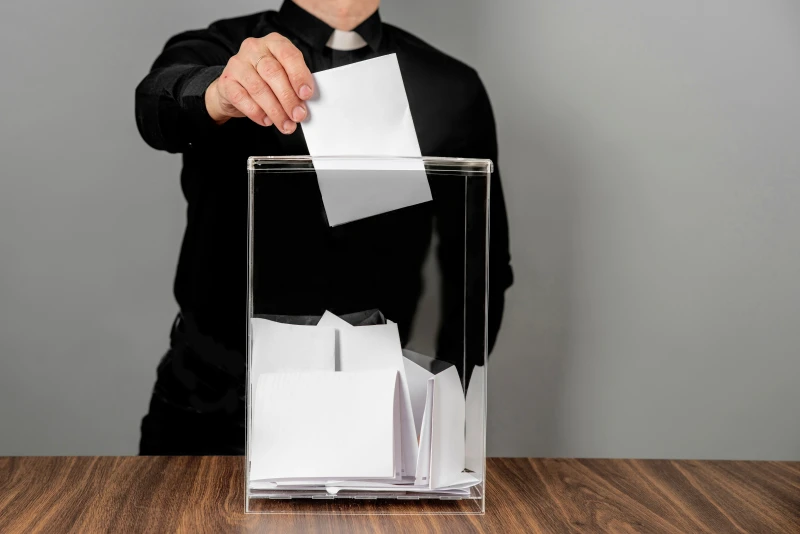

Younger U.S. priests say they are far more conservative than older priests in their voting patterns, according to a 2025 survey. / Credit: TSViPhoto/Shutterstock
Washington, D.C. Newsroom, Oct 14, 2025 / 15:35 pm (CNA).
Younger U.S. priests are far more conservative than older priests, reaffirming a generational divide in political views, according to a 2025 survey.
The strong generational divide in political views among Catholic priests in the United States was reaffirmed in a 2025 survey that shows younger priests are far more conservative than older priests.
The National Study of Catholic Priests, published on Oct. 14, was commissioned by The Catholic Project at The Catholic University of America and conducted by Gallup. Researchers surveyed the same priests who were surveyed in The Catholic Project’s 2022 survey to examine the U.S. priesthood.
According to the report, the 2025 survey “closely mirrors” the findings in 2022 and shows “a clear generational shift away from liberal self-identification.”
About 51% of priests ordained in 2010 or later said their political views are either conservative or very conservative. Another 37% said they were moderate and the remaining 12% were either liberal or very liberal.
For priests ordained between 2000 and 2009, 44% were conservative or very conservative and 44% were moderate. Again, only 12% of priests ordained in these years said they were liberal or very liberal.
Priests ordained between 1990 and 1999 leaned conservative, but to a lesser degree, with 38% saying they are somewhat conservative, 34% identifying as moderate, and 26% saying they are liberal or very liberal.
For priests ordained in the prior decade, 1980 to 1989, conservatism declines to about 22%, and 36% call themselves moderate. About 40%, a plurality, identify as liberal or very liberal.
Older priests are far more liberal. A majority of priests ordained between 1975 and 1979, about 53%, say they are either liberal or very liberal. About 34% are moderate and 11% conservative. About 61% of priests ordained before 1975 said they are liberal or very liberal, 25% are moderate, and 13% are conservative.
The theological leanings of priests followed a similar pattern, with an even sharper decline in theological progressivism, according to the researchers. About 70% of priests ordained before 1975 called themselves theological progressives, and only 8% of priests ordained 2010 or later said the same.
About 70% of the youngest priests self-report as conservative/orthodox or very conservative/orthodox on theological matters.
Generational divide on pastoral priorities
The political and theological shifts flow into generational divides about what issues the Church should be prioritizing as well, such as climate change, LGBTQ outreach, and synodality.
Regarding climate change, 78% of priests ordained before 1980 said this should be a priority, as did 61% of priests ordained between 1980 and 1999. Just 35% of priests ordained in 2000 or later agreed.
The trend is similar for outreach to the LGBTQ community with 66% of priests ordained before 1980 calling this a priority, but just 49% of priests ordained between 1980 and 1999 and 37% of priests ordained 2000 or later agree.
Synodality is also popular among older priests, with 77% of those ordained before 1980 calling it a priority. About 57% of priests ordained between 1980 and 1999 say the same, but only 37% of priests ordained 2000 or later agree.
Immigration
Some issues show smaller generational divides. For example, 93% of priests ordained before 1980 see immigration and refugee assistance as a priority, as do 82% ordained between 1980 and 1999 and 74% ordained in 2000 or later. Also, 98% of priests ordained before 1980 believe poverty, homelessness, and food insecurity are priorities, as do 92% ordained between 1980 and 1999 and 79% ordained 2000 or later.
There is a generational divide on whether Eucharistic devotion or access to the Traditional Latin Mass are priorities, with younger priests more focused on those issues.
About 88% of priests ordained in 2000 or later see Eucharistic devotion as a priority, as do 66% of those ordained between 1980 and 1999 and 57% ordained before 1980. About 39% of priests ordained in 2000 or later see Latin Mass access as a priority, but only 20% of priests ordained between 1980 and 1999 and 11% of priests ordained before 1980 agree.
Read More
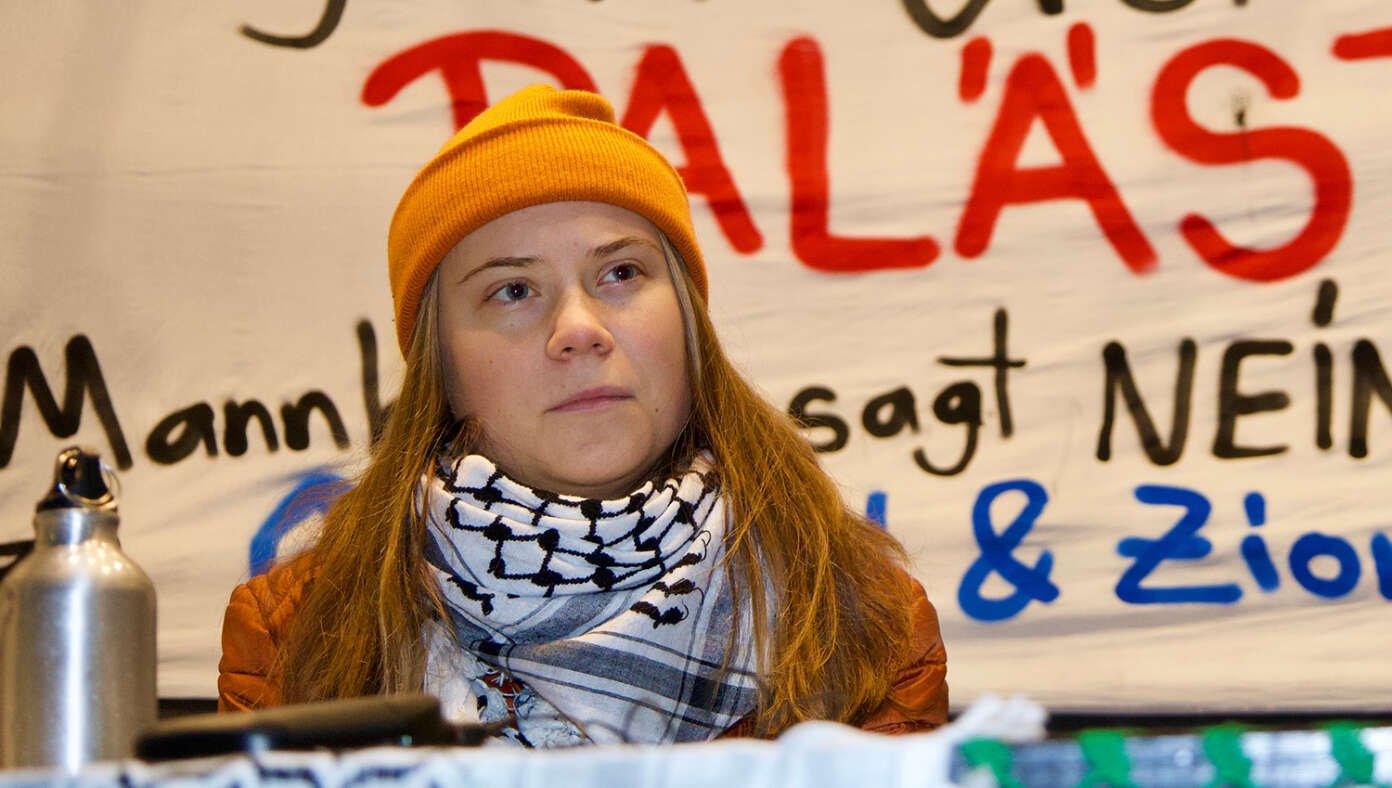
STOCKHOLM — The ceasefire agreement between Israel and Hamas that was brokered by President Donald Trump had other unforeseen consequences, as sources reported hearing a sad Greta Thunberg ask if anyone else needed a flotilla.
Read More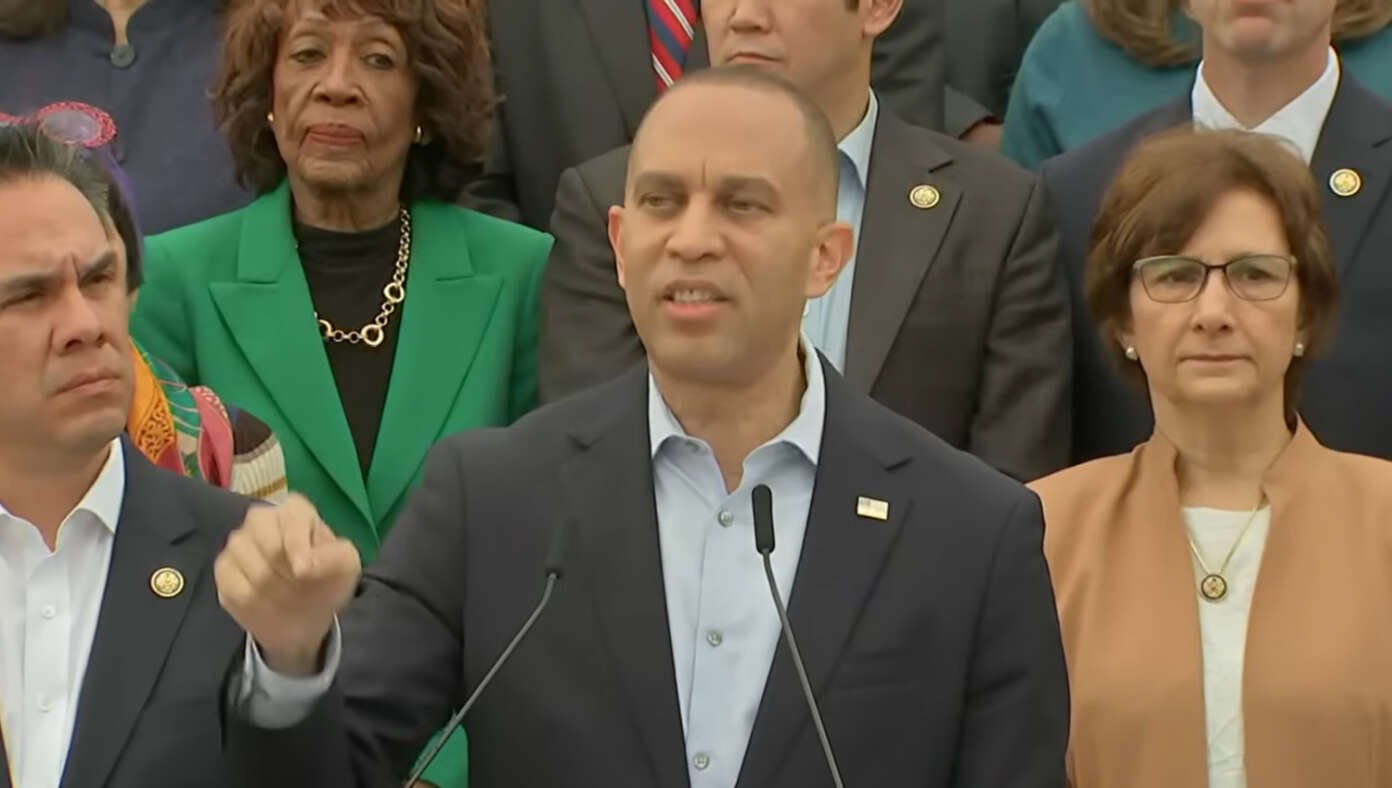
WASHINGTON, D.C. — Democrats have called on President Donald J. Trump to stand down and immediately stop fanning the flames of peace.
Read More
| Picture of the day |
|---|

|
|
Painted stork (Mycteria leucocephala) catching a fish in Yala National Park, Sri Lanka.
|


null / Credit: Ivan Galashchuk/Shutterstock
Washington, D.C. Newsroom, Oct 14, 2025 / 13:38 pm (CNA).
A recent study found that among adults who attend Christian worship at least monthly, 68% agreed marriage is between one man and one woman, but only 46% defined “family” in corresponding terms of a husband and wife, their children, and relatives.
Family Research Council in partnership with the Cultural Research Center at Arizona Christian University released findings this week from a new national survey of 1,003 churchgoing adults. The survey, “Social Issues and Worldview,” was conducted in July to build off a similar 2023 study. The research identified beliefs of the faithful in regard to social topics and family life.
Of the 9 in 10 respondents identifying as Christian, 39% were Catholic, 20% mainline Protestant, 18% evangelical, 9% independent or nondenominational Christian, and 4% Pentecostal.
Among the respondents, about 22% claimed the definition of family changes over time and across cultures. About 20% said family is any group of people who care for one another, 6% said family is any group of people who live together, and 6% said they did not know how to describe family.
No demographic or Christian group was found to have a clear majority in support of the biblical definition of family, but the highest support came from theologically defined born-again Christians (59%) and Pentecostal churchgoers (56%).
The majority of respondents did agree on a number of other family-related topics. Of churchgoing adults, 70% said it is important for society to facilitate families with a father, mother, and children living together and 68% said they believe marriage is only between a man and a woman.
Christian stances on social issues and need for discipleship
The report found churchgoers are open to more discipleship and teaching on a number of current social issues. A large majority reported that additional worldview training is desirable in areas regarding religious freedom (88%), social and political responsibility (76%), and abortion and the value of life (60%).
The research revealed more specific Christian views on pro-life topics including abortion and euthanasia. About 25% of churchgoing respondents said they would prefer their church to preach or teach about abortion at worship services more often, while 18% said they would prefer teachings on the topic less often.
Those interested in increasing preaching on the topic mostly attend either evangelical (31%) or Pentecostal churches (31%), while adults who align with independent and nondenominational churches were the least interested in increasing the number of sermons on abortion (19%). Interest among Catholics in increasing the frequency fell from 41% to 29% since 2023.
Respondents were asked their beliefs in regard to the statement: “Euthanasia is morally wrong.” Less than half of churchgoers (43%) said they agreed, another 23% said they disagreed, and 35% said they were unsure and did not know whether euthanasia was right or wrong.
Overwhelming majorities agreed that people should be able to practice “peaceful, genuinely held religious beliefs without being punished by the government, even if those beliefs are not culturally popular” (83%), that “every person is made in the likeness of God” (84%), and that “every human being has undeniable value and dignity” (83%).
Read MoreWhen Glamorous Glennis, an experimental Bell X-1 aircraft built to mimic the shape of a .50 caliber bullet, shot to 700 mph (1,127 km/h) with Air Force Captain Chuck Yeager inside, it paved the way for Americans to one day travel to space. On Oct. 14, 1947, the X-1 was launched from the bomb bayContinue reading “Oct. 14, 1947: Flying faster than sound”
The post Oct. 14, 1947: Flying faster than sound appeared first on Astronomy Magazine.
Read More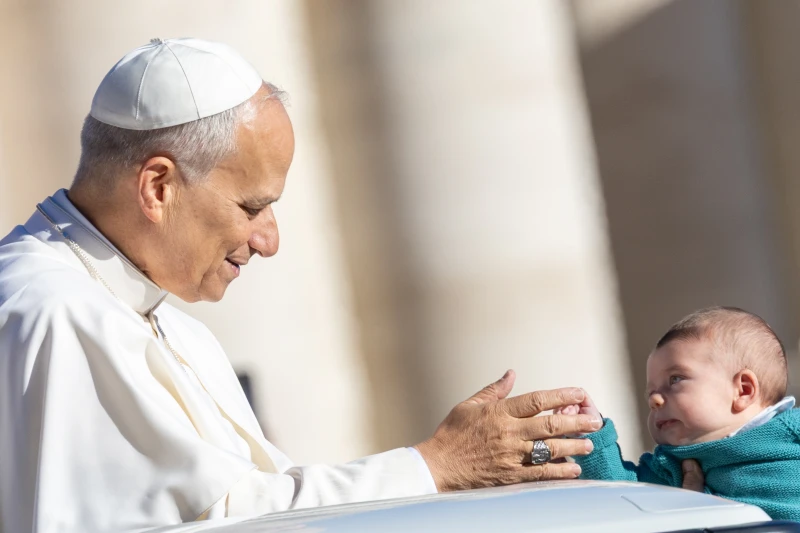

Pope Leo XIV greets a baby at his general audience in St. Peter's Square at the Vatican, Wednesday, Oct. 8, 2025. / Credit: Daniel Ibáñez/CNA
Vatican City, Oct 14, 2025 / 08:41 am (CNA).
Pope Leo XIV has sent 5,000 doses of antibiotics to the Gaza Strip in a humanitarian gesture aimed primarily at children and made possible by the recent reopening of key border crossings allowing the entry of aid.
According to Vatican News, the shipment of the medicines began this week, following the ceasefire and the start of the first phase of U.S. President Donald Trump’s peace deal.
Israel is allowing the entry of up to 600 aid trucks per day, operated by the United Nations and authorized by international organizations, private sector actors, and donor countries. On Oct. 12, more than 170 trucks loaded with humanitarian aid crossed into Gaza, according to the United Nations Relief and Works Agency for Palestine Refugees in the Near East (UNRWA).
The shipment of antibiotics to Gaza was coordinated by the Office of the Papal Almoner, the Vatican dicastery charged with carrying out charitable works for the poor and those in need on behalf of the pope, and led by Cardinal Konrad Krajewski.
“We are putting into practice the words of the apostolic exhortation Dilexi Te, dedicated to the poor,” Krajewski explained to Vatican News. “It is necessary to act, to pay attention to those in need.”
Infant formula delivered to Gaza
Caritas Jerusalem has become one of the first humanitarian organizations to respond to the ceasefire in Gaza, quickly mobilizing to address the urgent needs of families and children throughout the Gaza Strip.
Following the ceasefire, Caritas Jerusalem deployed its medical teams to deliver 10,000 bottles of infant formula to families with newborns and young children who had been deprived of basic nutrition during the months of conflict.
The distribution was carried out through Caritas’ network of medical centers in Gaza, ensuring that the aid reached the most vulnerable communities quickly and safely, the Catholic organization reported.
This story was first published by ACI Prensa, CNA’s Spanish-language news partner. It has been translated and adapted by CNA.
Read More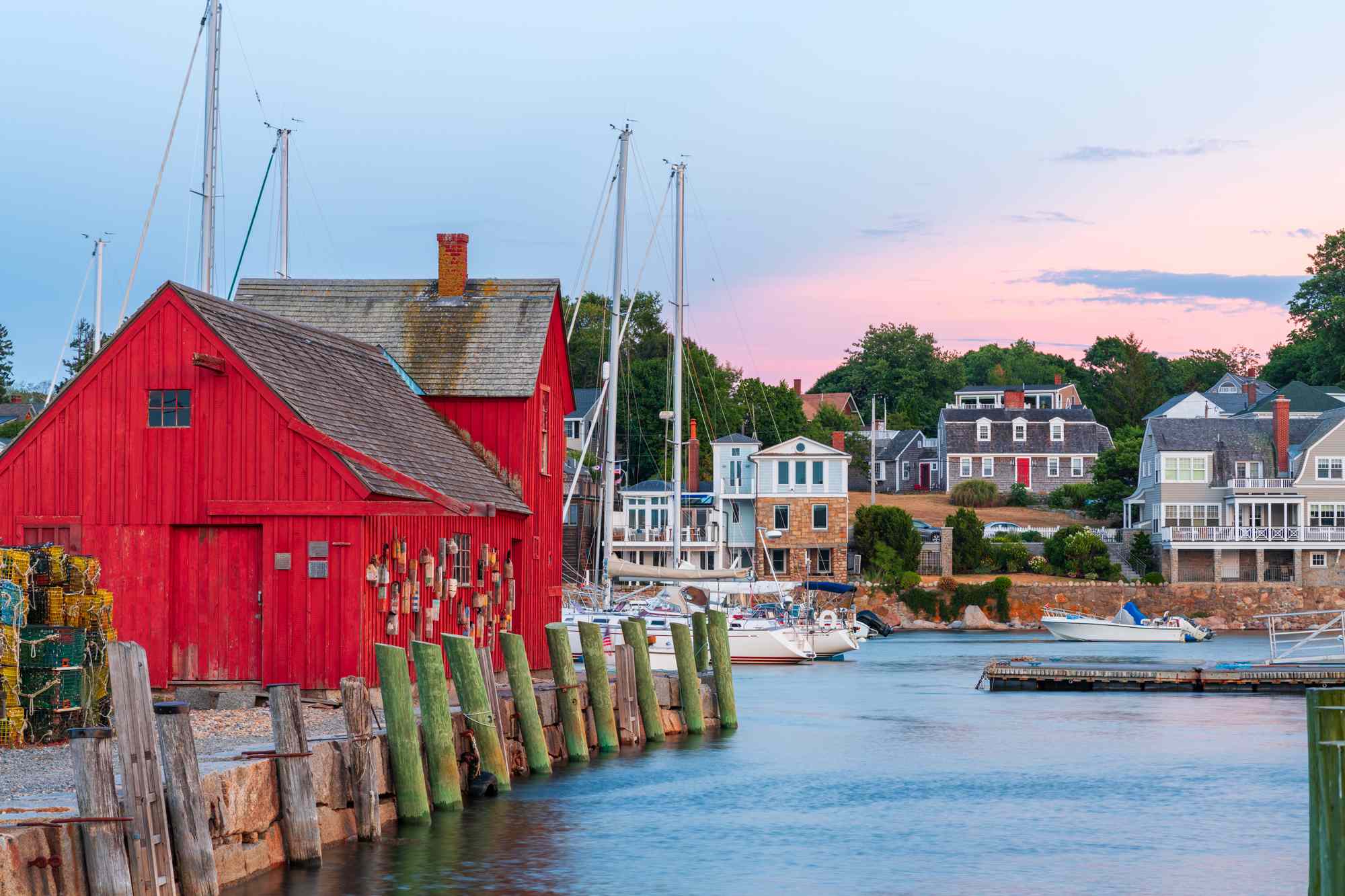
![Diocese of Lexington launches net-zero plan inspired by Laudato Si’ - #Catholic -
Holy Family Church in Booneville, Kentucky, with solar panels implemented as part of the Catholic Diocese of Lexington’s goal of net zero emissions. / Credit: Photo courtesy of the Catholic Diocese of Lexington, Kentucky
Washington, D.C. Newsroom, Oct 14, 2025 / 06:00 am (CNA).
The Diocese of Lexington has developed an ambitious plan to make all of its buildings net-zero by 2030 because, it noted, as Scripture says: “The earth and all in it belongs to God.” The plan includes all buildings of the 59 parishes in the diocese, spanning over 50 counties in central and eastern Kentucky.The plan is a direct response to Pope Francis’ 2015 encyclical Laudato Si’ (“On Care for Our Common Home”), which called on the global Catholic Church to engage in dialogue about the future of the planet. Within the writings, Pope Francis urged the Church to acknowledge environmental challenges.The diocese was inspired by Laudato Si’ No. 217, which says “living our vocation as protectors of God’s handiwork is a life of virtue,” Josh Van Cleef, director of the Office of Peace and Justice for the diocese, told CNA. “It is not a secondary dimension of Christian life.”The Diocese of Lexington’s plans stem from the seven goals of Laudato Si', which include response to the cry of the earth, response to the cry of the poor, ecological economics, adoption of sustainable lifestyles, ecological education, ecological spirituality, and community resilience and empowerment.Inspiration from Pope FrancisSince the encyclical was published, dioceses and archdioceses across the country have implemented ways to live out Pope Francis’ call. As this year marks the 10-year anniversary of the encyclical, Bishop John Stowe of Lexington and his leadership team have laid out one of the most ambitious plans yet.Van Cleef, who leads the Respect Life Ministries for the diocese, said the idea began to develop in 2024. Each parish was asked and encouraged by leaders including the bishop to form Laudato Si’ teams. The teams then carried out “parish assessments based on the seven goals of Laudato Si’, to do listening sessions, and to come up with concrete action plans.”The parishes “did not come up with a ‘net-zero plan’ but just a plan for them to implement care for creation.” These plans included “looking at what concretely they can do from their lighting, like moving to LED [light bulbs], to the different programming they can do to promote this as a faith issue in the parishes.”“We’ve seen a lot of our parishes really take this on, and it’s been pretty inspiring,” Van Cleef said. “Then as a diocese, the action plan was published on Jan. 1, 2025, which included plans from each one of the 59 parishes, plus the diocese-wide commitments.”The biggest undertaking within the diocese’s goals is “to move all facilities to net-zero emissions.” Diocese leaders have been working for more than a year with a group of experts in the area of sustainability to accomplish it. Net-zero is defined by the diocese as “the balance between the amount of greenhouse gas emissions that an organization generates and the amount removed from the atmosphere.”Holy Family Church in Booneville, Kentucky, with solar panels implemented as part of the Catholic Diocese of Lexington’s goal of net zero emissions. Credit: Photo courtesy of the Catholic Diocese of Lexington, KentuckyNet-zero planThe four steps the diocese is taking to shape its net-zero approach include measuring, efficiency, solar development, and transitioning from gas to electric. Measuring is the first step and “identifies the main sources of emissions, calculates the overall carbon footprint, and sets the stage for developing an effective action plan,” according to the published plan.Efficiency will be tracked through an energy audit from 2025–2026. The diocese will conduct “evaluations of energy use within a building with the goal of identifying areas where energy is being wasted,” the report explained. An essential part of the plan is the implementation of solar power, which “offers a pathway for the transition to renewable energy.” Finances will be discussed, including grants, low-interest financing options, and energy service agreements “to ensure that projects can fit within a location’s budget.”The diocese will carry out a shift from gas to efficient electric to “facilitate the diocese’s overall movement towards renewable energy.” Once again, the diocese will “identify available grants, rebates, and other financing options to assist locations in this transition.”The diocese is committed to the steps because as Catholics, “we’re not opting in to care for creation for partisan reasons, and we don’t get to opt out,” Van Cleef explained. “For us, we’re all in because of our faith. And when we look at Scripture, we see Psalm 24:1 say: ‘The earth and all in it belongs to God.’”“Then we read in Genesis that our job is to ‘till and keep.’” Therefore, we must “cultivate and protect what belongs to God,” Van Cleef said. “It is a matter of faith. When we look to Pope Francis, Laudato Si’, and Pope Leo, it is clear that the Church is called to urgent and decisive action.”“We know that all creation communicates God’s glory, and it is a sacred place where we encounter God.”More Laudato Si’ inspiration The Diocese of Lexington’s plan is in motion and will continue to develop over the coming years to hopefully reach its goal by 2030, according to the diocese. While parts of its mission will take time, other practices Lexington and a number of other Catholic communities are carrying out are active now.The Archdiocese of Washington, D.C., created an action plan that provided a number of options for parishes, schools, and families “to become better stewards of God’s creation, help reverse climate change, and work towards sustainability as proclaimed in Laudato Si’’.” This included a volunteer group called Laudato Trees, which began in 2022 to increase the tree canopy in the D.C. area by planting trees on Catholic church and school properties. The Diocese of Sacramento, California, began to utilize solar panels in 2022, including at its memorial center at St. Anthony Parish. Soon after, a diocesan Creation Care Committee was established and the diocese enrolled in the Vatican’s Laudato Si’ Action Platform.Parishes in the Diocese of Tucson, Arizona, also implemented plans by adding solar panels to buildings around the community in 2024. Our Mother of Sorrows Catholic Church was the flagship parish, but quickly after a number of others across the diocese joined.Other communities across the nation including the Diocese of Joliet, Illinois, and the Archdiocese of Atlanta wrote plans that offered everyday actions for parishes and families to carry out in order to further the seven goals. They called for the faithful to recycle, focus on energy production, cut back on toxic and plastic items, replace gas-fueled appliances with electric ones, and to spread the message of Laudato Si’.](https://unitedyam.com/wp-content/uploads/2025/10/diocese-of-lexington-launches-net-zero-plan-inspired-by-laudato-si-catholic-holy-family-church-in-booneville-kentucky-with-solar-panels-implemented-as-part-of-the-catholic-diocese.webp)

Holy Family Church in Booneville, Kentucky, with solar panels implemented as part of the Catholic Diocese of Lexington’s goal of net zero emissions. / Credit: Photo courtesy of the Catholic Diocese of Lexington, Kentucky
Washington, D.C. Newsroom, Oct 14, 2025 / 06:00 am (CNA).
The Diocese of Lexington has developed an ambitious plan to make all of its buildings net-zero by 2030 because, it noted, as Scripture says: “The earth and all in it belongs to God.” The plan includes all buildings of the 59 parishes in the diocese, spanning over 50 counties in central and eastern Kentucky.
The plan is a direct response to Pope Francis’ 2015 encyclical Laudato Si’ (“On Care for Our Common Home”), which called on the global Catholic Church to engage in dialogue about the future of the planet. Within the writings, Pope Francis urged the Church to acknowledge environmental challenges.
The diocese was inspired by Laudato Si’ No. 217, which says “living our vocation as protectors of God’s handiwork is a life of virtue,” Josh Van Cleef, director of the Office of Peace and Justice for the diocese, told CNA. “It is not a secondary dimension of Christian life.”
The Diocese of Lexington’s plans stem from the seven goals of Laudato Si’, which include response to the cry of the earth, response to the cry of the poor, ecological economics, adoption of sustainable lifestyles, ecological education, ecological spirituality, and community resilience and empowerment.
Inspiration from Pope Francis
Since the encyclical was published, dioceses and archdioceses across the country have implemented ways to live out Pope Francis’ call. As this year marks the 10-year anniversary of the encyclical, Bishop John Stowe of Lexington and his leadership team have laid out one of the most ambitious plans yet.
Van Cleef, who leads the Respect Life Ministries for the diocese, said the idea began to develop in 2024. Each parish was asked and encouraged by leaders including the bishop to form Laudato Si’ teams. The teams then carried out “parish assessments based on the seven goals of Laudato Si’, to do listening sessions, and to come up with concrete action plans.”
The parishes “did not come up with a ‘net-zero plan’ but just a plan for them to implement care for creation.” These plans included “looking at what concretely they can do from their lighting, like moving to LED [light bulbs], to the different programming they can do to promote this as a faith issue in the parishes.”
“We’ve seen a lot of our parishes really take this on, and it’s been pretty inspiring,” Van Cleef said. “Then as a diocese, the action plan was published on Jan. 1, 2025, which included plans from each one of the 59 parishes, plus the diocese-wide commitments.”
The biggest undertaking within the diocese’s goals is “to move all facilities to net-zero emissions.” Diocese leaders have been working for more than a year with a group of experts in the area of sustainability to accomplish it.
Net-zero is defined by the diocese as “the balance between the amount of greenhouse gas emissions that an organization generates and the amount removed from the atmosphere.”

Net-zero plan
The four steps the diocese is taking to shape its net-zero approach include measuring, efficiency, solar development, and transitioning from gas to electric. Measuring is the first step and “identifies the main sources of emissions, calculates the overall carbon footprint, and sets the stage for developing an effective action plan,” according to the published plan.
Efficiency will be tracked through an energy audit from 2025–2026. The diocese will conduct “evaluations of energy use within a building with the goal of identifying areas where energy is being wasted,” the report explained.
An essential part of the plan is the implementation of solar power, which “offers a pathway for the transition to renewable energy.” Finances will be discussed, including grants, low-interest financing options, and energy service agreements “to ensure that projects can fit within a location’s budget.”
The diocese will carry out a shift from gas to efficient electric to “facilitate the diocese’s overall movement towards renewable energy.” Once again, the diocese will “identify available grants, rebates, and other financing options to assist locations in this transition.”
The diocese is committed to the steps because as Catholics, “we’re not opting in to care for creation for partisan reasons, and we don’t get to opt out,” Van Cleef explained. “For us, we’re all in because of our faith. And when we look at Scripture, we see Psalm 24:1 say: ‘The earth and all in it belongs to God.’”
“Then we read in Genesis that our job is to ‘till and keep.’” Therefore, we must “cultivate and protect what belongs to God,” Van Cleef said. “It is a matter of faith. When we look to Pope Francis, Laudato Si’, and Pope Leo, it is clear that the Church is called to urgent and decisive action.”
“We know that all creation communicates God’s glory, and it is a sacred place where we encounter God.”
More Laudato Si’ inspiration
The Diocese of Lexington’s plan is in motion and will continue to develop over the coming years to hopefully reach its goal by 2030, according to the diocese. While parts of its mission will take time, other practices Lexington and a number of other Catholic communities are carrying out are active now.
The Archdiocese of Washington, D.C., created an action plan that provided a number of options for parishes, schools, and families “to become better stewards of God’s creation, help reverse climate change, and work towards sustainability as proclaimed in Laudato Si’’.” This included a volunteer group called Laudato Trees, which began in 2022 to increase the tree canopy in the D.C. area by planting trees on Catholic church and school properties.
The Diocese of Sacramento, California, began to utilize solar panels in 2022, including at its memorial center at St. Anthony Parish. Soon after, a diocesan Creation Care Committee was established and the diocese enrolled in the Vatican’s Laudato Si’ Action Platform.
Parishes in the Diocese of Tucson, Arizona, also implemented plans by adding solar panels to buildings around the community in 2024. Our Mother of Sorrows Catholic Church was the flagship parish, but quickly after a number of others across the diocese joined.
Other communities across the nation including the Diocese of Joliet, Illinois, and the Archdiocese of Atlanta wrote plans that offered everyday actions for parishes and families to carry out in order to further the seven goals. They called for the faithful to recycle, focus on energy production, cut back on toxic and plastic items, replace gas-fueled appliances with electric ones, and to spread the message of Laudato Si’.
Read More:max_bytes(150000):strip_icc():format(jpeg)/TAL-header-north-cascades-national-park-washington-CASCADELOOP1025-090f883081da442d80136814052dd05a.jpg)
:max_bytes(150000):strip_icc():format(jpeg)/TAL-lead-image-ROCKPORTMA1025-351a675b38c841698d809d338b2f4ea7.jpg)